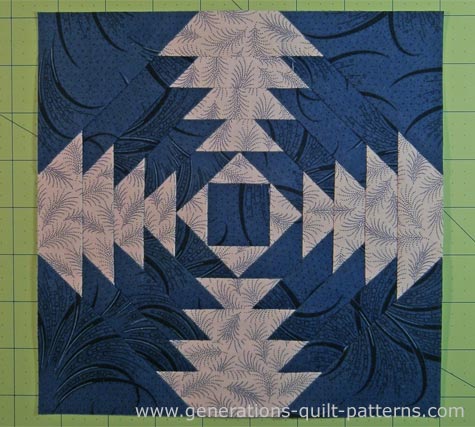 |
| North Carolina Star |
December 21, 1933-The
North Carolina Star is the quilt pattern of the day published by Nancy Cabot in the Chicago Tribune.
She wrote, "Today's design is one of the loveliest of all the variations of the star pattern. It is the authentic state star pattern of North Carolina and, of course, quite old. Originally it was executed in blue and white calico, since those colors and that fabric were most common. Today it is usually made in modern materials in a variety of colors."
I love this block! I agree that it is "one of the loveliest" as Nancy said. It's not too complicated either if you paper piece it as I did. You can download my pattern
here.
Here are the paper pieced parts to my pattern-
I sewed them together like shown below.
To sew the last three pieces together, it was easier for me to sew the short seam at the center and then match up the two long seams to sew. You could also start at one end, sew to the center, pivot your pieces, sew across the center, pivot, and sew down the last side.
There is an old
North Carolina Star pattern by The Progressive Farmer
here. Look at this
pattern (image 10) from Aunt Martha in 1960 that gives "complete instructions" on making this block. Quite different from the patterns we buy today! Another image (#36) of a
North Carolina Star block and a little instruction on colors for this quilt can be seen in the Indiana Farmer's Guide from 1940.
The
North Carolina Star block can be found in Electric Quilt's
Blockbase program as #3045 though the proportions are very different from Nancy Cabot's but more in keeping with the patterns I refer to in the links above. I prefer Nancy's version!
I did not find any quilts made using this block design but I found this sampler quilt that has a
North Carolina Star in the second row and the bottom row.
Tomorrow-
Diamonds and Shadows


































![[IMG_2514%255B6%255D.jpg]](https://blogger.googleusercontent.com/img/b/R29vZ2xl/AVvXsEjrL8iD7VSHu09m5UDE8H4ekQMdAqeszsR6ZuSnqm1bO7yVU4jZVEJ2TLmk1iI-4luCevaa5FRcydU4vWBoWOfSn2TxocYbGU-u2V810gsB__TdrWxnhaHkmu1jnjSzGQjj4z0u7uwX_do/s280/IMG_2514%25255B6%25255D.jpg)














